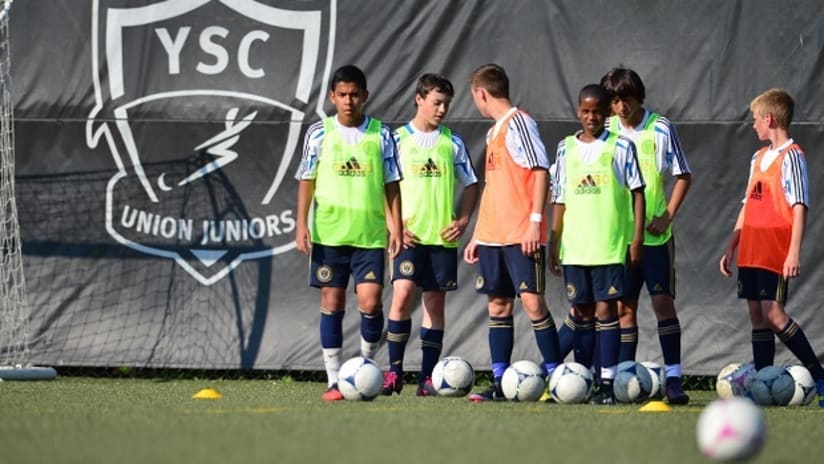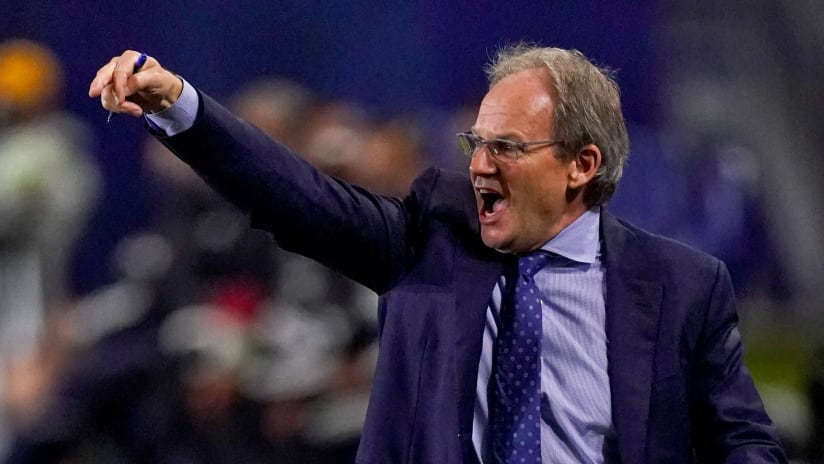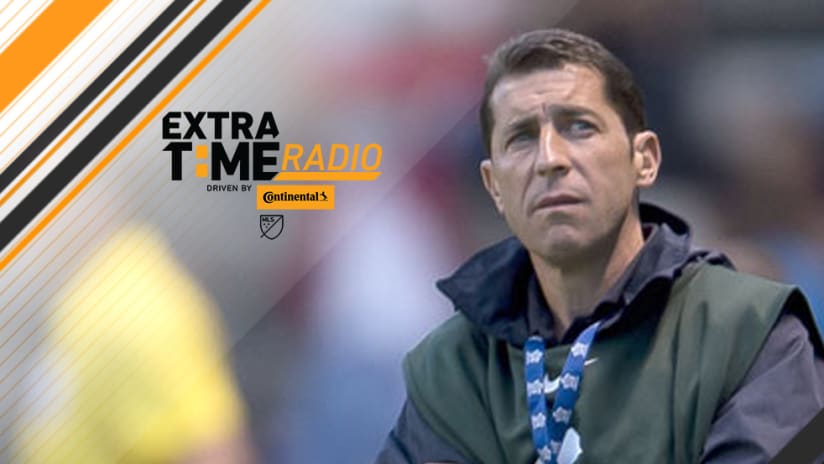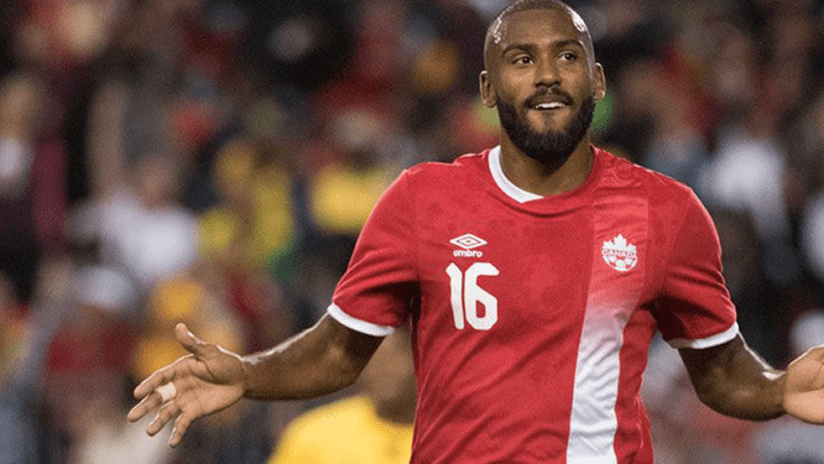WAYNE, Pa. – Visitors to YSC Academy have to know what they're looking for.
Based in an anonymous-looking collection of rectangular buildings at the edge of an office park in Philadelphia's northwest suburbs, the facility gives passersby on nearby Route 202 or Interstate 76 little hint of what lies inside. Only a small glimpse of a green synthetic turf field is visible from out front.
The program's academic component is housed in an even plainer one-story edifice a stone's throw to the right, at first glance looking more like a dentist's or accountant's office than the high-tech, innovative institution of learning that it is.
But step inside this unassuming complex, and you'll encounter a bold vision of progressive education and world-beating player development – one whose founders believe holds the key to the future of not only the Philadelphia Union, but all of soccer in North America.
“We believe that the US is a future powerhouse in the sport of soccer,” says YSC founder and Union minority owner Richie Graham. “We have all these ingredients, and we'd like the Philadelphia Union to be a contributor to that process. We are going to be a 'build' and not 'buy' club.”
- MORE 24 UNDER 24: How does an average day for an Academy player differ from that of a professional? | INFOGRAPHIC
Most conversations with youth development experts in the US and Canada usually feature this type of bold, optimistic talk at some point. But the model envisioned and bankrolled by Graham and his partners at YSC is different from the norm – so different, in fact, that the idea of grooming homegrown crops of world-class talent here starts to seem like a real possibility.
The top echelon of the Union's youth academy is based out of YSC, which is more than just a training complex. It's all inspired by Graham's own education at Burke Mountain Academy, a small private school in rural Vermont which has produced more than 50 Olympic skiers since opening in 1970. At his new complex, he's fused a rigorous player development program with a customized college preparatory school of 66 student students – all boys, all talented soccer players – from the eighth to 12th grades. (That five-year range was selected to encompass the U.S. Soccer Development Academy's current age groups.)
Here, soccer and academics are interwoven as snugly as anywhere in the United States, perhaps even more than U.S. Soccer's Bradenton Residency program in Florida. MLS game balls are likely to be used for velocity and kinetics lessons. Union communications staffers occasionally visit to introduce the kids to dos and don'ts of interviews and social media. And to remind students of the high stakes and need for performance in both spheres, one of the school's rooms is even shaped like a stadium, with a table surrounded by swooping, pearlescent walls modeled after Allianz Arena, home of Bayern Munich.
“Soccer is a very, very tough sport that happens at a very high [mental] level. When you have to make decisions at split seconds and think through things and visualize and know three steps ahead, that's really higher-level thinking,” says Dr. Nooha Ahmed-Lee, YSC's Head of School. “And that's the kind of education we have – it's not about recall and remember any more, it's really about application, synthesis, creativity and innovation.”
At YSC, students' athletic and academic schedules are created and managed in sync, structured to allow for morning team trainings – just like the Union's senior squad – and afternoon technical, tactical or video work, or perhaps a session with the in-house sports psychologist. When opportunities arise for youngsters to train with the first team, as they often do, they are shuttled south to PPL Park by van. If a road trip for weekend DA matches necessitates clearing space for Friday or Monday travel, players are assigned homework via online programs similar to those used in distance learning.
“These student-athletes, like all adolescents, have that Circadian cycle in the morning – they don't wake up, they're not really ready to learn until their brain wakes up. So exercise has been written all over the place in education as one of the most significant factors in helping kids to learn. Nutrition, hydration, movement are other significant factors,” says Ahmed-Lee. “Though these things may seem kind of low-level, they're not a part of a lot of schools. So making sure it's a holistic experience is really key.
“We care that our students take charge of their learning. Just like the coach isn't going to be with them all the time, telling them what to do, the teacher's not going to be there all the time. We use the word 'metacognition' – thinking about their thinking. They have to be self-aware, they have to self-regulate, they have to self-advocate.”
The idea is to replicate the established, fully professionalized academies of Europe and South America, without sacrificing the solid scholastic foundation that North American parents expect for their children.
“We feel we have to create a system here in the US that's a solution for the American culture,” explains Graham, who played soccer at Dartmouth under legendary coach Bobby Clark (now at Notre Dame) a quarter-century ago. “We've looked at and studied a lot of ideas in terms of what's happening in youth development overseas and we've tried to bring back those ideas to create a high-performance environment to help kids maximize their potential as players.… But we have to put them through an American filter.
“Education isn't like a nice thing to sort of do on the side here in our culture, it's pretty mandatory,” he adds. “The deeper we looked at that, we said, 'It's the same brain whether you're learning math or science or whether you're learning technique or tactics in soccer.' Typically a kid's athletic and academic worlds aren't aligned. The power of a sports academy is you can align those, and they can start to work together. You can actually plan your season with periodization both athletically and academically.”
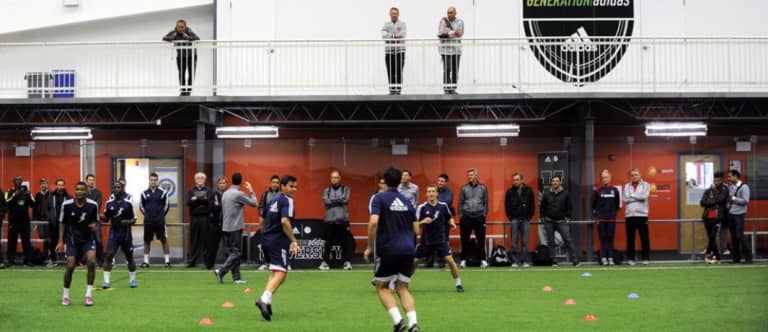
The Union's entire Under-18 Development Academy team is enrolled at YSC Academy, along with many of their U-16 and U-14 players, and their numbers are slated to grow in the years ahead. Another large chunk are DA players from Philly's youth affiliate club Continental FC, the long-time eastern Pennsylvania powerhouse formerly known as FC Delco that has been churning top prospects like Ben Olsen, Jeff Larentowicz and former US women's national team goalkeeper Nicole Barnhart for decades.
All aspire to become professionals. But all recognize that at least a year or two of rigorous university duty is almost certainly in their future.
“We have kids who wouldn't have the opportunity to ever dream about going to college without this program,” says Ahmed-Lee. YSC's tuition is listed at a hefty $28,500 per year, but Graham says more than 80 percent of the student body receives some form of need-based scholarship, and 50 percent are on full rides.
Few, if any, details are left to chance at YSC. With students hailing from across the region, a residential dormitory was considered, but ultimately passed over in favor of a more family-oriented solution. Four large houses in the area were acquired and are home to several kids during the week, to help them bypass long commutes and focus on their work. Their parents take turns as the adults in charge on a scheduled rotation.
“It's something that we love and want to pursue, to become a professional,” says Nick Blacklock, a YSC student and member of Philly's U-13/14 Development Academy squad who joined the program from Lehigh Valley United, a partner club based in the same region as the Union's new USL team, which is set to debut next year. “This is the best environment for that – you can't find this, really, anywhere else. So I think it's a good fit. Some people might say it's crazy, but we like it.”
YSC opened in 2013 and matriculated its first graduating class last year, and lured Ahmed-Lee from the illustrious Shipley School in nearby Bryn Mawr earlier this year. A brain cognition specialist who also teaches at St. Joseph's University, Dr. Ahmed-Lee oversees a bright, airy learning environment featuring multi-modal “smart boards,” clear glass walls on which students can jot notes and calculations, common areas for group study sessions and a cafeteria run by a sports nutritionist.
It's not your traditional classroom, to say the least.
“Teachers in past paradigms, I think, aren't used to being the person who needs to change for the learner. It's that, 'I taught it, you didn't learn it, the deficiency is in you,'” explains Ahmed-Lee. “In our mindset, the teacher is the experienced one in learning. It shouldn't be the job of a 14- or 15- or 16-year-old to hold that responsibility to make sense of it all.
“It is not designed like classrooms,” she says of her facility. “Because when you graduate and go out into the world, classrooms don't exist in any places besides schools. So it's designed as a workplace.”
Back at the YSC Sports building, the workplace takes the form of two spacious indoor fields, two turf fields outside and an array of sophisticated workout equipment and training amenities. There, the focus is on closing the long-standing gap between the US youth standard and Europe's top academies.
“A typical American 15-year-old, even in a developmental academy, would be training three to four times a week, with a game on the weekend. And I'm looking at his peer at a progressive club like Hoffenheim, and they're training 10 units a week, a unit being a training session,” notes Graham. “So we're behind and we're training half as much. Do the math. How are we going to catch up?
“So part of the idea of this school is, it gave us an environment where we could equal the training units. And we could spend a lot of time focusing on technical development – individual development plans.... The cumulative effect over years, we think can make a difference.”
The academy's long-term vision and keen attention to detail makes for a stark contrast with the senior team. The Union have struggled to impose themselves on MLS, qualifying for the post-season just once since their 2010 expansion debut, frustrating their fans mightily and signing just three Homegrown players to date, and none since YSC's affiliation.
That's not lost on academy leaders, who see this year's US Open Cup run as a potential watershed for the club to surge into a new era, one built on local talent and a blue-collar Philly identity.
“There's a disconnect, yeah,” says Union academy director Tommy Wilson, who came on board after holding a similar post at Scottish giants Rangers FC. “It's frustrating for the first-team staff first and foremost. We share resources. I've got a number of staff here that work across both platforms. So it can be frustrating.
“Hopefully if we can win [the Open Cup] this year, it can be the platform to launch us on to bigger and better things. I know the staff, Richie and Nick [Sakiewicz, the Union's CEO] and others, are working hard to improve the infrastructure around the first team, to try and accelerate the development there as well.”
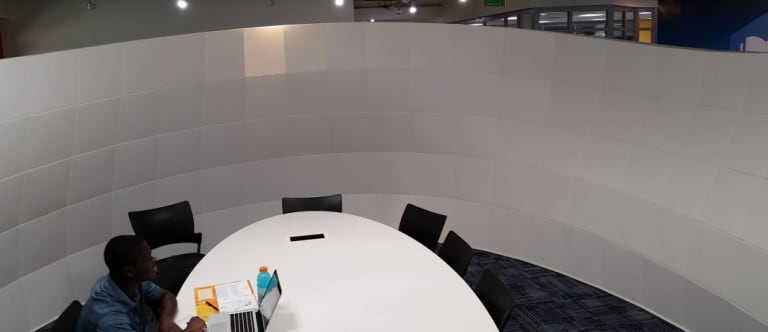
The entire Union youth system is in its infancy, having launched in the fall of 2013. But it's designed to identify and guide talent as young as age eight from across the metropolitan area. Promising players can be “called up” to the “Union Juniors” and “Union Futures” supplemental training/competition programs, yet remain based with their local clubs until the time comes for consideration at YSC.
The academy teams sit at the top of the heap of a multi-layered pyramid, one modeled after the U.S. Soccer Federation system that feeds talent first to the youth national teams and later to the USMNT.
“We've got some way to go – we're only two years into the project,” admits Wilson. “There's 11 million people around our catchment area. That's the same size as London, and London's got 12 or 13 professional clubs. We've got one. So maximizing that community, that outreach, is a huge project that we've almost not touched.”
Graham and others have invested substantially in YSC, and funding also comes from the recreational and adult leagues operated by the academy. Even so, Dr. Ahmed-Lee nonetheless spends much of her time cultivating fundraising and philanthropy mechanisms to build a sustainable financial platform.
“We have millennials that are coming here every night to play in leagues. And the marketing story we tell them is, thanks for playing, because your dollars are going, indirectly, to support Philadelphia's future,” explains Graham. “We take 100 percent of anything we earn here, whether it's camps, tournaments, adult leagues, youth leagues, and we redirect that money back in to offset what we're doing with the Union.
“We think that model can be replicated in other cities – for sure. One thing we do have in this country is a massive recreational engine, and that engine's getting bigger.”
It's a numbers game in many ways. But organizational culture weighs heavily at YSC, too.
“You want to be able to create an environment where you can start to define at a young age what matters to us,” says Graham. “We know that 95 percent of [students] aren't going to end up playing at PPL. But if we can take those kids and better their life, get them a good education, get them to learn the kind of things you learn when you're pursuing excellence at a really high level – you learn about yourself, you learn about others – we feel really good about that. And then with that five percent, our theory is we're going to create a stronger, better, faster five percent.
“Community is massive. It is the secret sauce, ultimately, for any of these high-performance development cultures.”
- MORE 24 UNDER 24: The complete 2015 rankings
That focus is evident on a visit to the academy. Student-athletes take care to introduce themselves to guests with a handshake, and faculty members emphasize the kids' ownership from work habits to janitorial duties.
“Our kids order the food in the lunchroom, all the snacks we eat. They have a budget, they place the order, they work with ... our nutritionist. They put away the groceries, they clean the school, they clean the bathroom,” says Ahmed-Lee. “They are fully responsible for the school – it's their school.”
After asking if he could help out the youth program during a lengthy injury layoff, Union midfielder Michael Lahoud was welcomed to campus earlier this year to provide math tutoring for those in need. Such connections to the mother club are cultivated as part of a larger effort to merge timeless values and cutting-edge educational theory in a soccer-specific framework.
“This is – contrary to popular belief – the most connected generation of all, these digital natives,” Ahmed-Lee says of her charges. “These kids want an open-source kind of education. They want to be able to collaborate with others. Putting them in a classroom with a finite number of kids and one teacher hasn't been their world, and how they learn. So the teachers have to know that.
“You will see some similar things on the pitch that you see in the classroom. A student who's taking a risk here is going to take a risk there. Kids who might be a little cautious here might be cautious there. So we work together on that. There is merit to being able to know the coaches and work with them. It's a very thoughtfully created program.”

